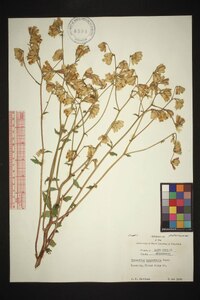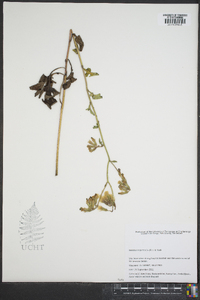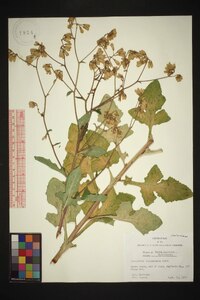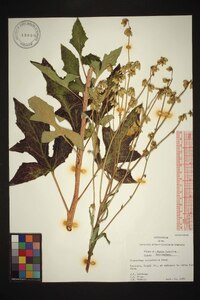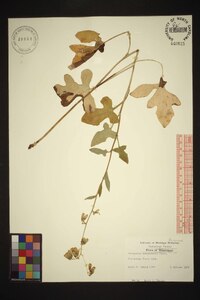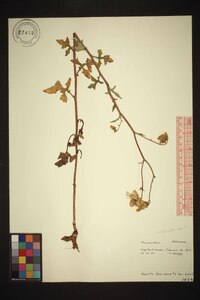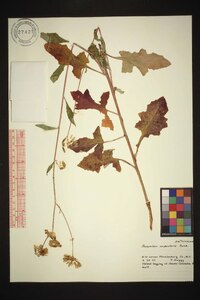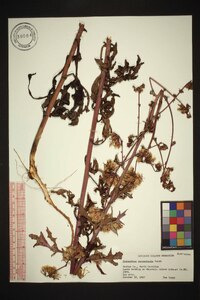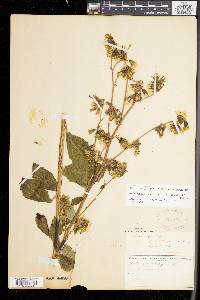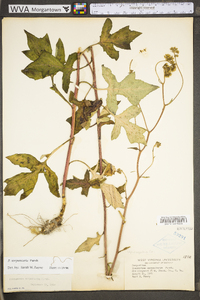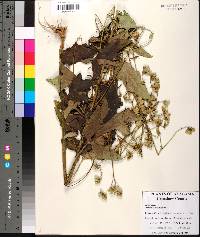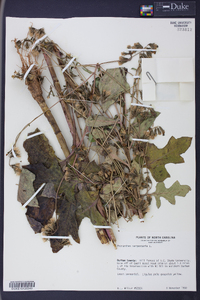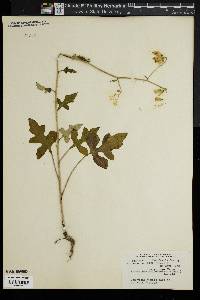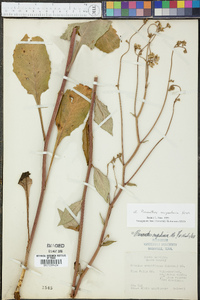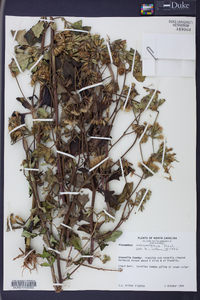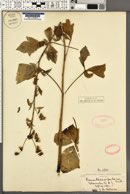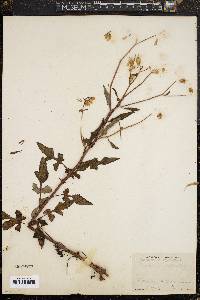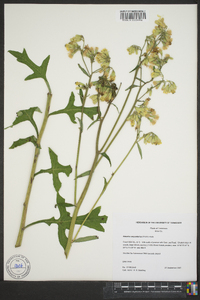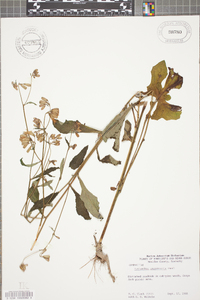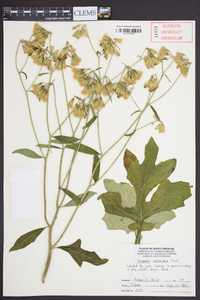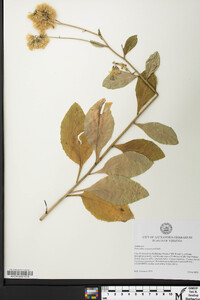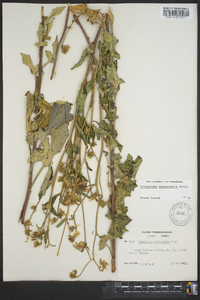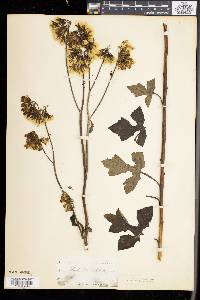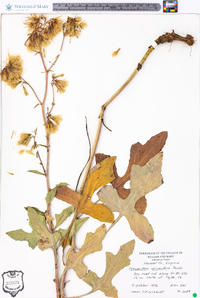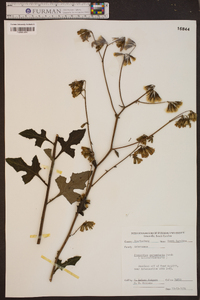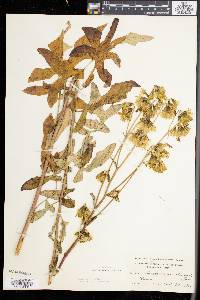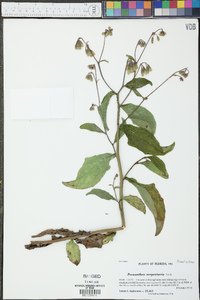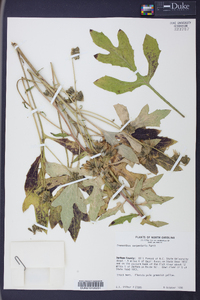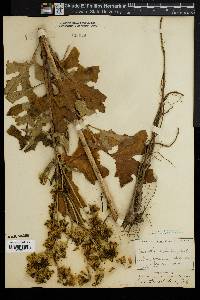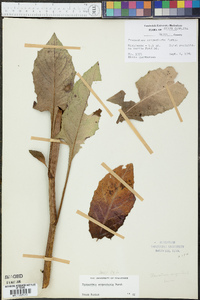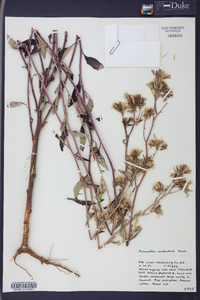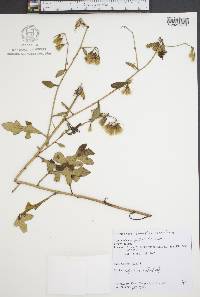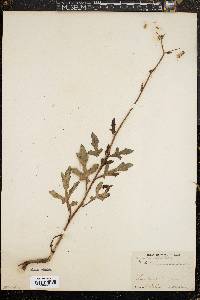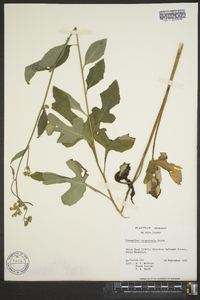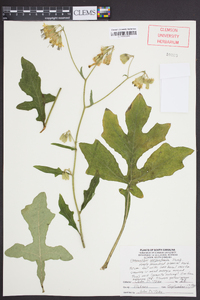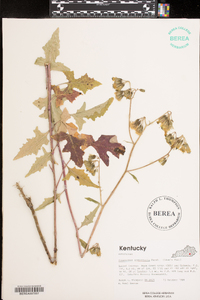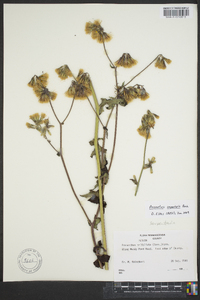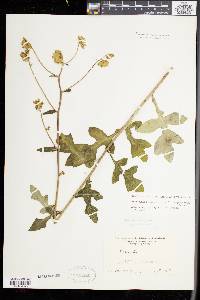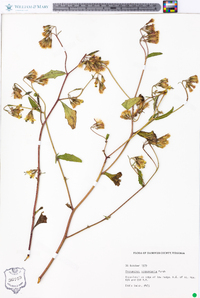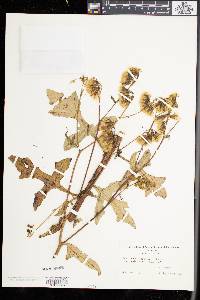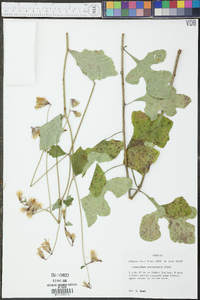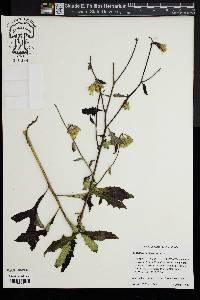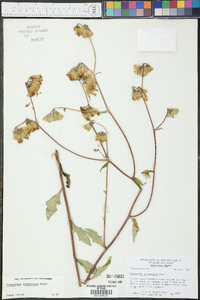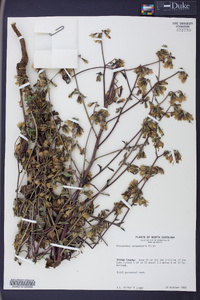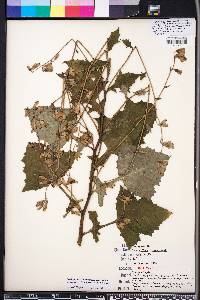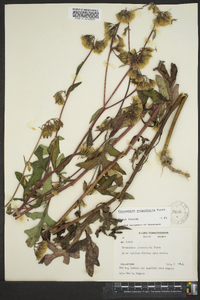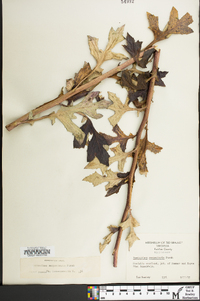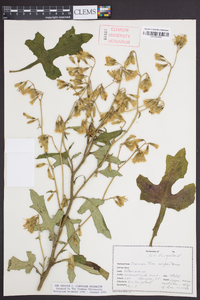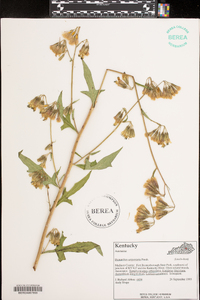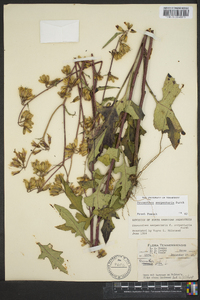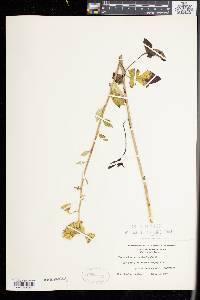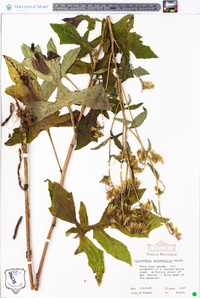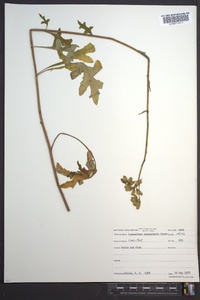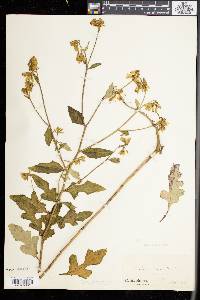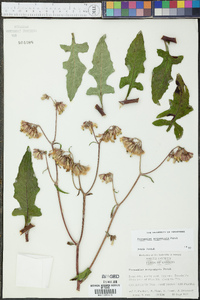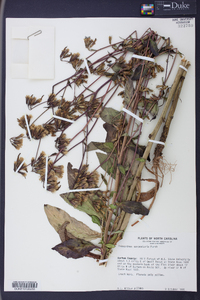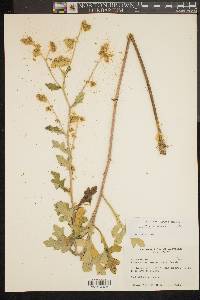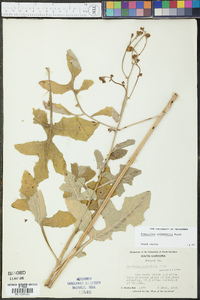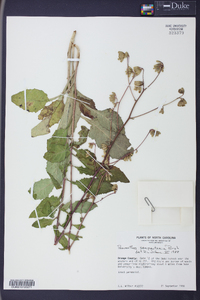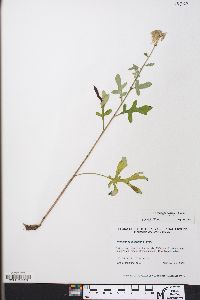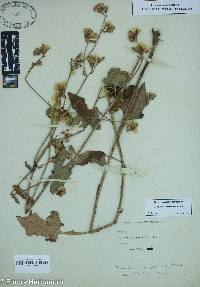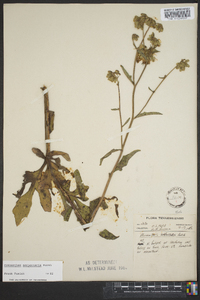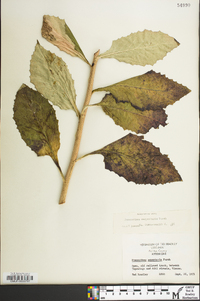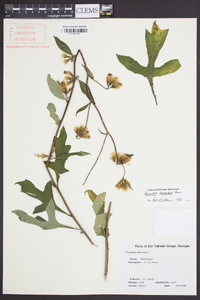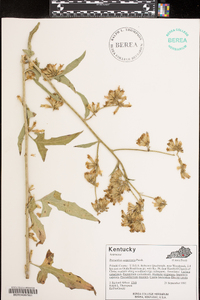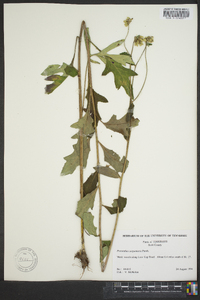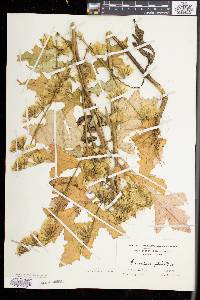Nabalus serpentarius
|
|
|
|
Family: Asteraceae
Cankerweed, more...cankerweed
[Nabalus fraseri, moreNabalus integrifolius Cass., Prenanthes fraseri D. Dietr., Prenanthes integrifolia (Cass.) Small, Prenanthes serpentaria Pursh, Prenanthes serpentaria f. serpentaria , Prenanthes serpentaria f. simplicifolia Fernald] |
Plants 50-200+ cm; taproots short and thick, with lateral storage roots. Stems erect, green to reddish or purple mottled, proximally glabrous, distally sparsely tomentulose. Leaves: proximal often withered by flowering; petiolate (petioles 1-10 cm, often with pair of lobes); blades deltate to ovate or elliptic, 5-20 × 4-10 cm, coriaceous, margins usually deeply, pinnately 3-5-lobed, lobes and sinuses large and ± rounded, sometimes deeply cleft to base or palmately divided, apices acute or obtuse, ultimate margins entire or dentate, faces glabrous or finely tomentose on veins; cauline sessile or petiolate; distal reduced in size and lobing, often entire. Heads (6-12 in nodding clusters) in broad, paniculiform to corymbiform arrays (often widely branching and subdichotomous, at least some branches elongate). Calyculi of 8-10, green to purple, triangular to subulate bractlets 1-4 mm, often tomentulose to setose. Involucres cylindric (often attenuate basally to bracteate peduncles), 12-15 × 4-5 mm. Phyllaries (7-)8-(10), green or often purple, narrowly lanceolate to elliptic, 10-13 mm, sparsely hispid to appressed, coarsely setose, often reduced to single coarse, appressed seta (setae green or tan). Florets (8-)10-14(-19); corollas usually yellow to pale yellow, 9-15 mm. Cypselae golden brown to light tan, subcylindric, subterete or angled, 5-8 mm, indistinctly 8-10-ribbed; pappi tan, 7-8 mm. 2n = 16. Flowering Aug-Oct. Oak-hickory woodlands, borders, oak flats, pine woods, sandy areas; 100-1700 m; Ala., Conn., Del., D.C., Fla., Ga., Ky., Md., Mass., Miss., N.J., N.Y., N.C., Ohio, Pa., R.I., S.C., Tenn., Va., W.Va. Prenanthes serpentaria is generally recognized by its large, deeply 3-5-lobed proximal leaves with rounded sinuses and lobes, winged petioles, attenuate involucres, sparsely setose phyllaries, and yellow corollas. The leaves are variable in size and lobing, often on the same plant. Some specimens have predominantly ovate to elliptic, unlobed leaves, and these have been variously recognized. Some specimens appear to combine characteristics of P. crepidinea or P. trifoliolata and may be the result of recent or ancient hybridization. The species boundaries in this group merit further study.
Stem mostly 5-15 dm, glabrous, or often rough-hairy in the infl; lvs glabrous or inconspicuously hairy, well distributed along the stem, mostly wing-petiolate and with a broad-based, usually pinnately few-lobed blade to 17 נ10 cm, often with large, ±rounded lobes expanded above the base, varying to occasionally merely toothed and tapering to a shortly wing-petiolar base, the basal ones sometimes trifoliolate and again cleft; infl mostly rather open-paniculiform, with elongate, ascending branches; heads nodding; invol 10-13(-15) mm, its principal bracts ca 8, with a few (sometimes very few) long, coarse hairs, often speckled with fine black dots, but without the larger, waxy-looking papillae of no. 5 [Prenanthes trifoliolata (Cass.) Fernald]; reduced outer bracts avg narrower and a little longer than in no. 5 [Prenanthes trifoliolata (Cass.) Fernald], often more than 2 mm, and often more than 2.5 times as long as wide; fls (8-)10-11(-14), generally ochroleucous or chloroleucous; pappus stramineous; 2n=16. Woods, especially in sandy soil; Mass. to n. Fla., w. to Ky., Tenn., and Miss.; rare n. of Md. Aug.-Oct. (Nabalus integrifolius, with merely toothed lvs) Gleason, Henry A. & Cronquist, Arthur J. 1991. Manual of vascular plants of northeastern United States and adjacent Canada. lxxv + 910 pp. ©The New York Botanical Garden. All rights reserved. Used by permission. |


